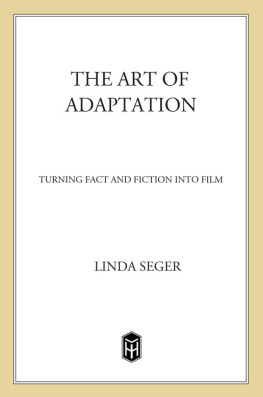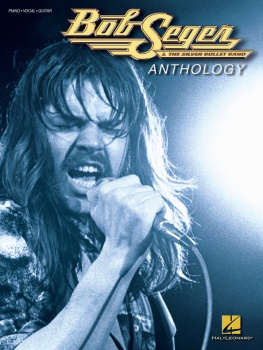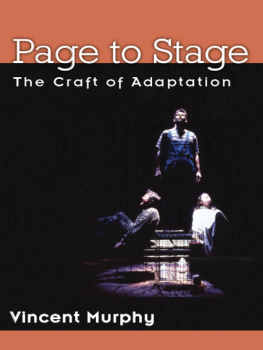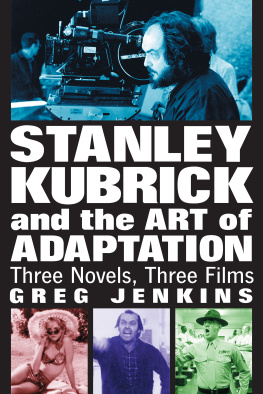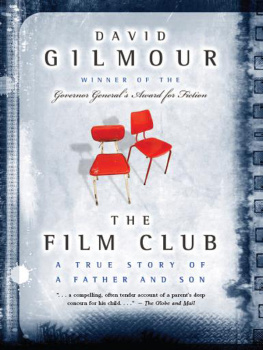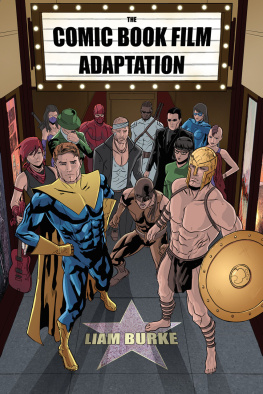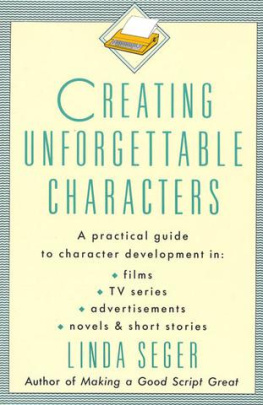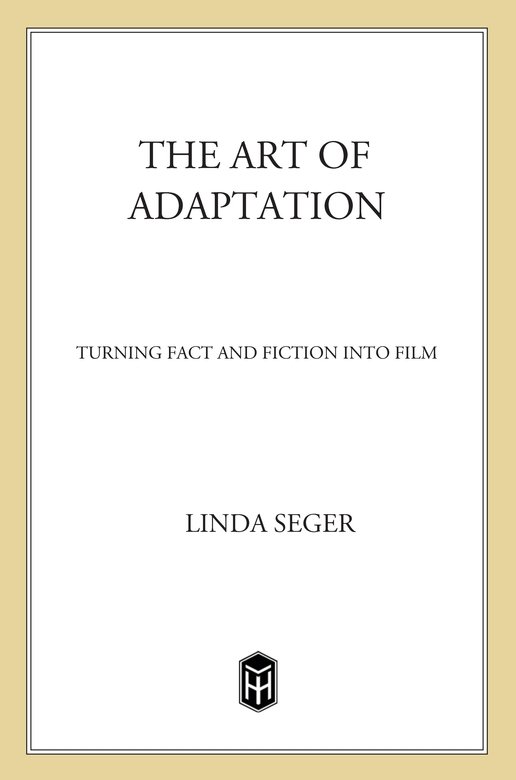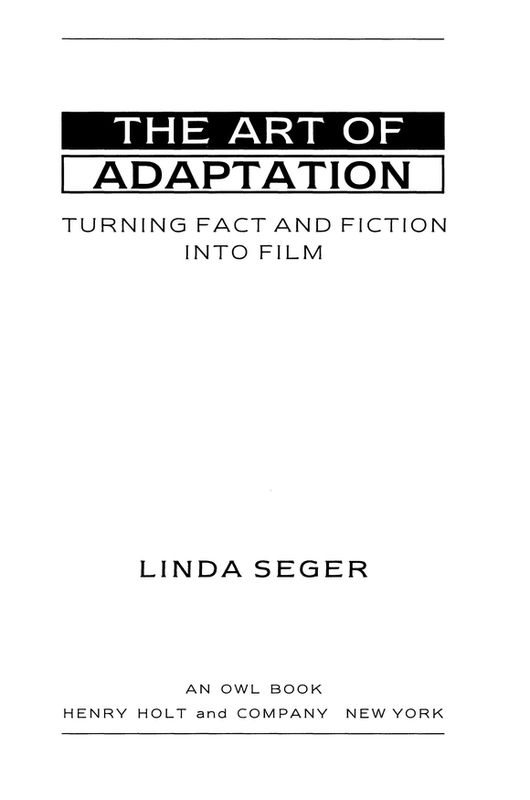Have you ever noticed how many films are adaptations? Adaptations are the lifeblood of the film and television business. Think about how many of our great films come from books, plays, and true-life stories: The Birth of a Nation, The Wizard of Oz, Gone With the Wind, The African Queen, Casablanca, Shane, High Noon , and Rear Window , to name a few. Even the classic Citizen Kane was loosely based on the true-life story of William Randolph Hearst.
Most Academy Award- and Emmy Award-winning films are adaptations. Consider these amazing statistics:
85 percent of all Academy Award-winning Best Pictures are adaptations.
45 percent of all television movies-of-the-week are adaptations, yet 70 percent of all Emmy Award winners come from these films.
83 percent of all miniseries are adaptations, but 95 percent of Emmy Award winners are drawn from these films.
In any one year, most of the talked-about films will be adaptations. In December 1989 such films included Sea of Love, War of the Roses, She-Devil, The Little Mermaid, Henry V, My Left Foot, The Bear, Glory, Black Rain , and Steel Magnolias. Nineteen-ninetys adaptations included Awakenings, Postcards from the Edge, Bonfire of the Vanities, Memphis Belle, Dances With Wolves, The Russia House, Henry and June, Reversal of Fortune, GoodFellas, Hamlet, Cyrano de Bergerac, The Grifters, and Misery.
These adaptations are not the exclusive domain of experienced writers and big-name producers. Many new writers have gotten their start as screenwriters by optioning a book or true-life story and insisting that they be hired to write the script. Barry Morrow ( Rain Man ) optioned the true-life story of Bill (a mentally retarded man), which went on to win an Emmy Award. Anna Hamilton Phelans first script, Mask , was based on the life of Rusty and Rocky Dennis (Rocky was a boy with craniodiphicil syndrome, a genetic disorder that causes severe distortions of the face). Brian Ross wrote a script on spec of a true-life story called A Friendly Suit, which has been optioned several times but has not yet been made. However, that script led to NBCs hiring him to write two docudramas, Cast the First Stone and On Thin Ice: The Tai Babilonia Story . Leoni Sandercook got her start with the television movie A Season of Fear, again a true-life story. Kurt Luedtke wrote Out of Africa, his second produced film, partly because he was optioning a little-known but important book about Denys Finch-Hatton, which provided the key to making Out of Africa workable. Earl Hamner began his career by adapting his novel into a television series, which became the long-running The Waltons.
Many novelists look to film to give their stories a second chance and to increase readership. Million-dollar options are no longer uncommon among the most successful novelists. New novelists, as well, hope to see their stories turned into film, often writing specifically with an eye to movie structure and characters. Pete Dexter, who wrote the best-selling novel Paris Trout, sold the film rights to his book on the condition that he write the screenplay.
More and more executives and producers are turning to adaptations for their film material. Many of them say that its more commercially viable to do material that already has an audience. Others cite the paucity of good original scripts, saying that many scripts are derivative and unoriginal. But the cost can be high. Doing an adaptation means paying for the project twicefirst to purchase the rights, second to pay for the screenplay. And the material needs to be evaluated twice: first the potential workability of the source material must be assessed; then it must be decided whether the screenplay is the best translation of the story.
Just as some of the greatest successes in films have been adaptations, so have some of the greatest failures. One adaptation, Heavens Gate, brought down a studio (United Artists). Another, Raise the Titanic, was responsible for the demise of Marble Arch Productions, a once strong and successful production company. Another, A Chorus Line, already had over a million dollars invested in rights before the cameras rolled. Yet in spite of a record run on Broadway, audiences did not come to see the film. Obviously, a great deal rides on doing an adaptation right.
Adapting from one source to another is a process. The Art of Adaptation is about how to do it. This book breaks down the process to guide writers, producers, film executives, and directors who struggle with the conversion of source material to films. It can also help novelists and playwrights convert their own works into screenplays (and from my experience of consulting with novelists and playwrights, Ive discovered that most of them have that desire).
This book builds on the material in my first two books, Making a Good Script Great and Creating Unforgettable Characters. You neednt have read them to be able to use this book, but if youve never written a screenplay, you will probably want to read some basic screenwriting books in addition to this one to guide you through the process (see Bibliography).
Most of the concepts in this book come from my own work as a consultant on a number of film adaptations, many of whichare currently in development and some of which have been produced, such as Romero, about the archbishop of El Salvador who was assassinated in 1980; The Neverending Story II, based on the novel by Michael Ende; and Flowers in the Attic, from the V. C. Andrews book. Produced television adaptations include Pancho Barnes (about a woman aviator in the early days of flying), The Fourth Wise Man (based on the novella of the same name by Henry Van Dyke), and the Australian miniseries The Rainbow Warrior, about the New Zealand ship belonging to the pro-peace organization Greenpeace that was blown up by French government agents in July 1985.
Throughout the book I will be drawing on films that are well known to readers. All of these are available on videoyou may want to rewatch some of them as you read the book.
If you want to return to the original source material, it can easily be found in bookstores and libraries. I have focused on fiction that I find enjoyable to read, hoping you will enjoy it too.
Most examples of novels and their film adaptations are drawn from Gone With the Wind, A Room with a View, One Flew Over the Cuckoos Nest, and Deliverance . For examples of short-story adaptations, I refer to several that are found in the book No, but I Saw the Movie, edited by David Wheeler. I refer to such well-known plays and their film adaptations as Amadeus, The Little Foxes, Driving Miss Daisy, and The Visit; the latter was the focus of my dissertation project and the subject of a film in the 1950s. My examples of true-life stories made into films focus on well-known people and on films that are easily found in a video store.
Whether you are a seasoned writer or a novice, I hope this book will help you clarify the key concepts that can make the difference between an adaptation that works and one that doesntconcepts that can make the adaptation as good as, or even better than, the original.
HOW TO USE THIS BOOK
This is a resource book. You dont need to begin at the beginning and read it straight through. If you are currently working on an adaptation, you may want to begin with the Introduction, which gives an overview of the work of the adaptor, then move directly to Part Two, which contains practical methods for translating a works story, characters, theme, and style into film.

